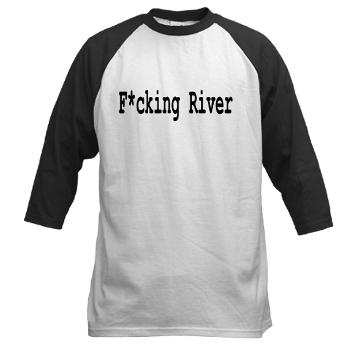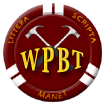Wednesday, July 27, 2005
I can't tell you how happy I am to have Poker Tracker back in my life, now that it is working with Full Tilt Poker! Seriously. I'm giddy.
So, this morning I have settled in to review the results from last night's session. I two-tabled a couple limit $.50/1.00 hold'em games. I was ecstatic at one point, as I was up $30 and at the break-even point from my original $100 deposit (still working off that bonus), but managed to lose it back down to where I started. So, I expected to see myself making some donkey plays.
Last night (and Sunday at Potawatomi) was an experiment in putting to test what I'm learning in the "Small Stakes Hold'em" book by Sklansky/Malmuth/Miller. (Who's Miller?) I've worked hard through my first year and a half of poker play to become a tight/aggressive player. However, in these loose, fishy low limit games, I've found myself over time screaming that if only I was playing against better players, I'd do better. Sadly, I don't have the bankroll yet to play higher limits, and in reality there are some flaws in my statement. What I've failed to do is adapt to the environment at the tables I play at. That doesn't mean I should become one with the donkeys, but it does mean I should exploit their weaknesses to my advantage, even if doing so doesn't exactly fit my "tight/aggressive" mantra. I suppose it fits more of a "slightly loose/aggressive" mantra. So, I've been working on some of the advice in that book. (Loving it so far, by the way - it is describing the fishes very well thus far).
So - on to my review. As suggested in the Poker Tracker Guide, I looked at the 10 hands where I lost the most money, and the 10 where I won the most money. I'll stick with the top 5 here for brevity's sake. Results:
Top 10 Losers:
1. Ad-9d, button - hit a set on the flop and lost to a rivered flush
2. Ks-Tc, button - pair of kings outkicked by KJ
3. Kc-Qc, middle - flop K99 with backdoor flush draw, turned 3-flush, no club on river, lost to 8-9d
4. Th-9s, small blind - turned a straight 8 to queen and lost to river flush
5. 4-4, big blind - lost to a turned Ace, pairing my opponent
Analysis of Losers:
1. Not much I could have done there. I suppose I could have saved one bet on the river, but for one bet on the river, I'm not laying down that set. I was actually more worried that my Ace was outkicked.
2. An example of what happens when you dive into the waters of playing weak kickers.
3. I thought my Kings might have been good early on, but I shouldn't have gone chasing, and should have dumped the hand at signs of resistance on the turn. I knew at the turn that my opponent had the nine. Should have let it go. Sometimes it's worth it to pay off a hand for information, but I already knew the caliber of hands that particular opponent played. I lost bets on the turn and the river on that one.
4. Not much I could do there either.
5. Held on too long. Shoulda let go.
Of the top 5, two were river suckouts, two were results of me holding on to a losing hand too long, and one was the obvious risk in expanding starting hand selection to include some weaker Aces and Kings. Since it was my intention to play those hands as suggested by the SSHE book when in position, I'm not counting that as a mistake. I've got two cases of bad luck and two misplays, I figure. Note to self: lay down the losers. It's not like we always know we're holding a losing hand, but in these two cases, I knew. And paid it off anyway.
With that King-Ten hand being one of my top 5 losers, I wanted to see if in fact those hands were profitable for me over the session (378 hands). So, I pulled up only these hands: KT, K9, QT, Q9, JT, J9, suited and offsuit. I saw those hands 24 times for a profit of $9.75 (.42 BB/hand). So, they were marginally profitable. Adding them to the mix didn't hurt my session. (I stuck mostly to the suited varieties, though QTo showed up a few times).
Top 10 Winners:
1. Th-8h, late - hit the flush
2. Kc-9c, UTG - pair of kings held up
3. AA - Aces held up
4. Ac-9c, middle - hit the flush
5. Ah-Kd, early - hit an Ace and it held up
I don't know why this surprised me, but it did. Early in the SSHE book, Sklansky talks about the three desirable attributes of a starting hand:
1. High card strength
2. Suitedness (for flush potential)
3. Connectedness (for straight potential)
He explains why most starting hands you decide to play should be strong in at least 2 of those 3 categories (with the exception of the powerhouse hands like pocket Aces/Kings, etc). Most of my winners fell into that recommendation. Hand #1 - the Th-8h hand - I normally would not play, but it is listed as playable with 6 or more players to a flop in late position (according to SSHE), so I played it. (This is an experiment, after all). Go figure, it won me a boatload.
In a nutshell, I've discovered that my biggest problem last night was holding on to losing hands too long when I sensed I was beat. The suckouts are par for the course, and as I saw at Potawatomi, if you can avoid those suckouts, low limit play can be very profitable. I didn't avoid them online last night, and it cost my my profit. But still, I broke even on the night, and cleared some bonus money while learning a lesson to watch for in my next session.
I'm pleased. The session was productive, if not profitable. I'll make some money next time :)










My clearance rate at PR is $.10 per hand, which I think is about average, since that is the rate at AP as well.
I've heard it's lower at FTP, especially at the low limits. I'm considering FTP, but a lot of people complain about how hard it is to clear a bonus.